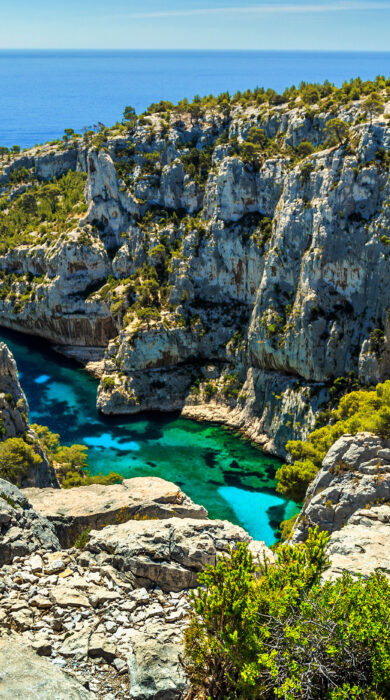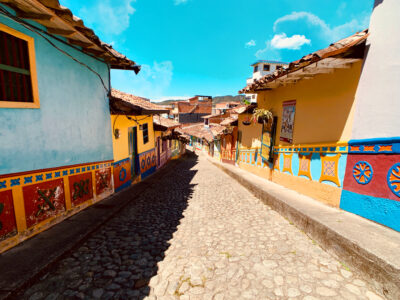
10 of Europe’s underrated national parks to explore this summer
Home to shifting sand dunes, flooded wetlands, sandstone mountains and saltwater lakes, Europe’s overlooked national parks offer some of the most outstanding natural landscapes that can be explored in a variety of ways…
1. Doñana National Park, Spain

Best for: Sand dunes, birdwatching and wild horses
Twitchers will probably know of this national park on the coastline of Andalusia in southern Spain. Doñana, around 35km from Seville, is a unique landscape of shifting sand dunes, salt marshes and grasslands – essentially, a haven for birdlife. More than 230 species have been spotted here, ranging from rare Spanish imperial eagles to flocks of pink flamingos – the latter can create quite the spectacle when gathered together on the lagoon to feed. Beyond the feathered species, wild horses can also be seen roaming the park, along with the endangered Iberian lynx.
2. Mljet National Park, Croatia

Best for: Island exploring, swimming and snorkelling
Croatia is well-known for its magical, waterfall-filled national parks of Krka and Plitvice, but there are six other national parks in the country that highlight its other natural offerings. One of them is Mljet National Park, which encompasses a large proportion of the Dalmatian Island of the same name. Reached by ferry from Dubrovnik or Korcula, the protected area covers two saltwater lakes, Malo and Veliko, that are linked together by a narrow canal. Trails for walking and cycling surround the lakes and often lead to hidden beaches, while kayaking and swimming is permitted on the glassy water, too. Make sure to visit the 12th-century Benedictine monastery that sits on the small islet of St Mary within the national park.
3. Soomaa National Park, Estonia

Best for: Boats and bogs
Dubbed the Wilderness Capital of Estonia, Soomaa National Park is unique thanks to its ‘Fifth Season’. Every year after the spring thaw or heavy rainfall, Soomaa’s landscape of fields, forests and farmland becomes completely flooded, resorting to the only transportation option around the national park being by boat. Locals here have now adjusted to this way of life with their own boats – and now visitors can now join guided canoe tours, paddling through flooded trees and meadows. But when Soomaa isn’t covered in water, there’s still plenty to do. Explore the vast bogs and wetlands by walking well-marked trails and across boardwalks. For a more immersive experience, you can even put on a pair of ‘bog shoes’ and feel the spongey ground beneath your feet.
4. Saxon Switzerland National Park, Germany

Best for: Artistic inspiration
Many might consider Bavaria to be the home of Germany’s most enchanting landscapes, but Saxon Switzerland National Park certainly gives the southern region a run for its money. Located just 30km from the city of Dresden, this national park is known for its otherworldly sandstone rock formations, attracting climbers from around the world. But that’s not the only activity available here: hiking and cycle routes lead through forests, past ancient fortresses and alongside the river Elbe. Follow the Painters Way trail and you’ll discover landscapes that inspired famous artists such as Caspar David Friedrich. Make sure you stop off to see the striking, 300-metre high Bastei Bridge.
5. Peneda-Gerês National Park, Portugal

Best for: Mountain villages and multi-day hikes
Portugal’s only national park, Peneda-Gerês, is tucked into the far north-west corner of the country close to the border of Spain – and with a varied landscape of oak forests, wildflower meadows, waterfalls and mountains, it’s NP status is thoroughly deserved. There are 15 official hiking trails throughout the park that range from a few kilometres to more strenuous, day-long hikes. But the ultimate challenge is the 160km GR50 trail. With 19 stages, the route follows Roman roads and pilgrim paths with each stage ending in one of the park’s historic mountain villages. Adventurers can cool off with some kayaking and other water-based activities at Caniçada Reservoir, located within the heart of the park.
6. South Downs National Park, England

Best for: Coastal walks and stargazing
Many visitors to the UK are often drawn to mountainous landscapes of the Lake District and Snowdonia, but South Downs National Park – just 1.5 hour train ride from London – showcases some of the best of England’s coastline and countryside. Designated a national park in 2010, it stretches from the Seven Sisters cliffs in Eastbourne all the way to Winchester, 140km away. Keen ramblers can hike the whole stretch along a national trail – or – there are plenty of other easy-going rambles through woodlands, lowland heath, chalk grassland and charming market towns. South Downs National Park has also been designated an International Dark Sky Reserve, boasting some of the most pristine night skies in Europe – ideal for stargazing (particularly at Bignor Hill).
7. Sarek National Park, Sweden

Best for: Experienced hikers and Sami culture
With 2,000 metres high mountains, more than 100 glaciers and the gushing water of the Rapa River running through its narrow valleys, Sarek National Park was established back in 1909 and is now thought to be one of the last remaining untouched wildernesses of Europe. Why? This protected area in Swedish Lapland has no roads, marked trails or mountain refuge huts, therefore orientation skills are an essential for any visitor. Alternatively, join a trekking tour to safely guide you across the vast deltas and soaring peaks: this is highly advised as you might even come across wild animals such as brown bears, lynxes, moose and wolves. Sarek is also deeply rooted in Sami culture, with Indigenous people using the land for reindeer herding over multiple generations.
8. Triglav National Park, Slovenia

Best for: Hiking through pristine Alpine scenery
Slovenia’s only national park can be found within the Julian Alps and gets its name from the highest mountain in the country – the 2,864-metre-tall Triglav. The three-headed mountain is considered an icon of Slovenian culture, so much so it features on the national flag. Climbing to the summit is possible for intermediate hikers, but there’s lots more to discover within the national park. Lake Bohinj lies at its heart and is popular for paddle boarding and other relaxing watersports. For adrenaline-pumping activities, head to park’s narrow gorges for a spot of canyoning: which involves abseiling, jumping into rockpools and sliding down waterfalls.
9. Calanques National Park, France

Best for: Secret coves, snorkelling and relaxation
Holidaymakers might swarm to the beaches along the Cote d’Azur during the summer months, but savvy travellers who want to find a hidden cove of their own will head to Calanques National Park – situated between Marseille and Cassi. The Calanques – a network of craggy, limestone cliffs – is also home to tiny white sand patches that are lapped by turquoise waters. Some of these miniature beaches are accessible, while others are impossible to reach. However, a little effort is required for the easiest-to-reach spots, which can put off visitors. Kayaking is also a popular activity among the tiny fjords, or perhaps even don a snorkel and goggles to discover an underwater world of octopuses, seahorses and other marine life.
Read next: Europe’s alternative lake destinations
10, Vikos–Aoös National Park, Greece

Best for: Giant gorges, stone villages and river rafting
Founded in 1973, Vikos–Aoös National Park is located within Greece’s Pindus Mountains and offers an alternative natural side to the country beyond its popular islands. Within the park is Vikos Gorge, considered the deepest in the world (1,300 metres) in relativity to its width. There are hundreds of marked trails weaving through the region, passing through historic villages and past stone bridges. Voidomatis River – popular for rafting beginners – flows between the canyon walls and is regarded as one of the cleanest rivers in Europe with water you can drink directly from its springs.


















